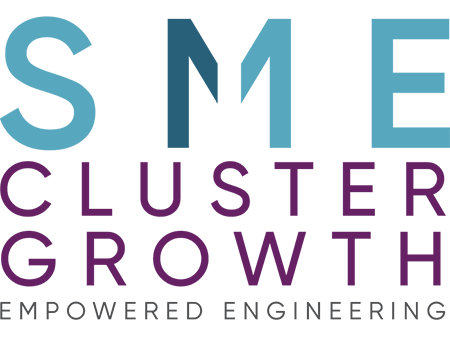Growth is an essential word in the entrepreneurial world. It is a goal, a compass.
However, most companies do not seek to grow exponentially. This idea may seem puzzling, yet if we consider that business covers large corporations as well as the neighbourhood grocery store, this fact is much less surprising. Thus, most companies only grow to the extent that their assets are fully utilized or to the extent that their managers want them to.
Indeed, if we all translate the term ‘growth’ as an exponential percentage of the company’s turnover, this almost philosophical and nowadays political notion is translated in a very different way in each company.
Within the European-funded SME Cluster Growth project, we undertook 21 expert interviews, collected 65 good practice case studies and surveyed 250+ professionals to explore the topic of growth and what it means for SMEs across Europe. Some findings are discussed below.
What growth means for SME owners.
Our research showed that the concept of growth is very different per SME and often relates to the vision of the SME owner. Whilst studies on company growth often combine quantitative measures such as job creation and sales growth as profitability, they are not necessarily a measure of success for smaller companies where the best measure is often the continued satisfaction of the founder. For some, personal satisfaction could simply be related to the creation of the business itself, others to its expansion, others by ‘doing good’ for society (Weber et al., 2015) whilst others seek a mode of continuous improvement and individual growth.
The notion of growth is less obvious than it first appears. For many SMEs we encountered, growth is not necessarily desired and appears to some leaders, above all, as a risk. Growth is a phase that can put the company at risk by deeply modifying it and requires growth management, which is far from obvious.
An organization cannot grow by maintaining the same structure, (Haire, 1959) and growth causes difficult transition phases (Greiner 1972; Chandler, 1962; Scott, 1973). It is said that there is a ‘1.5 Multiplier’ when it comes to business growth, that the business inevitably must change in structure and management approach when companies exceed 1.5, 15 and 150 staff.
So, why does the notion of growth appear to be indisputable and a strategic objective that entrepreneurs must achieve?
In our society, it is growth that validates the success of the company and the entrepreneur (Kiviluoto, 2013). It is, therefore, possible to ask whether growth as a strategic objective should not be rethought to become a means to support other company objectives, the one set by the entrepreneur or that the members of a company set collectively. Shouldn’t the strategic objective be the sustainability of the company as an entity?
Growth or sustainability?
The concepts of growth and sustainability are often wedded, but the difference is important. Growth mobilizes the company’s resources towards a quantified financial objective. The notion of sustainability, on the other hand, implies strategically organizing resources to make a non-financial objective possible: whereby the financial health of the company is not the end game, but rather an important step to achieve another objective.
This difference, far from being semantic or conceptual, leads to a completely different form of enterprise and commitment from employees, who would then freely work together to achieve an objective that makes sense to them, thus making the enterprise naturally resilient (Leroy, 2021).
However, when sustainability means having a non-financial end objective, there is an additional step in the strategic outlook for the company, whereas a business should have as its first strategic objective: to reach a level of financial stability necessary to ensure the survival of the company. Yet if a sustainable business means that we continue to consume natural resources, the model may be sustainable for the company, but not for the planet we all share.
More than being sustainable, a company could well be an essential agent for the ecological transition by assuming a regenerative role for the strategic resources it uses so that its activity repairs more than it takes away. Then regeneration could be the new strategic objective of each company, in a new way of thinking economically.
By Adeline Leroy and Todd Davey
References
Chandler, A.D. 1962 Strategy and Structure: Chapters in the History of the American Industrial Enterprise. Cambridge, MA: The MIT Press.
Greiner, L.E. (1972, “Evolution and revolution as organisations grow”, Harvard Business Review, July/August.
Haire, M. 1959. Biological models and empirical histories of the growth of organizations. In M. Haire, (ed.) Modern Organization. Wiley: 272-306.
Kiviluoto, N. (2013), « Growth as evidence of firm success: myth or reality?”, Entrepreneurship & Regional Development, vol. 25, n°7-8, pp. 569-586
Leroy, 1 (2021), “Mythologie entrepreneuriale : les effets performatifs de la tension entre ipséité et memete »
Scott, B.R. 1973. The industrial state: Old myths and new realities. Harvard BusinessReview, 51 (2): 133-148.
Weber, P.; GenesteL.A.; Connel J. 2015, Small business growth: strategic goals and ower preparedness, journal of business strategy, Vol36, No.3













